Honoring Pioneering Women in STEM
As we celebrate and observe the vital roles of women in American history, past and present, much attention is often given to women who broke down barriers in politics, government, culture and society.
Much less attention is paid to women in STEM (Science, Technology, Engineering and Mathematics) who came after them, and have shaped and advanced our scientific and technological supremacy in their respective fields.
Here are a few notable women, among several, who worked in or with the federal government like us, to improve our world, even as we strive to contribute and do the same. They continue to inspire and motivate us with awe.
Edith Clarke
The First Lady of Electrical Engineering
Edith Clarke – White House Archive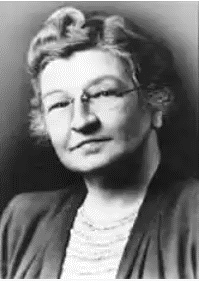 |
Edith Clarke was a pioneer in the field of electrical engineer at the turn of the 20th century. She worked as a “computer,” literally. That is someone who performed difficult mathematical calculations before modern-day computers and calculators were invented. Clarke struggled to find work as a female engineer instead of the ‘usual’ jobs allowed for women of her time but became the first professionally employed female electrical engineer in the United States in 1922. She paved the way for women in STEM and engineering and was inducted into the National Inventors Hall of Fame in 2015.
She was the first woman to be professionally employed as an electrical engineer in the United States, and the first female professor of electrical engineering in the country.
She was the first woman to deliver a paper at the American Institute of Electrical Engineers, the first female engineer whose professional standing was recognized by Tau Beta Pi, and the first woman named as a Fellow of the American Institute of Electrical Engineers (Edith Clarke, n.d.), (The White House Archives, n.d.)
Katherine Johnson
The Human Computer
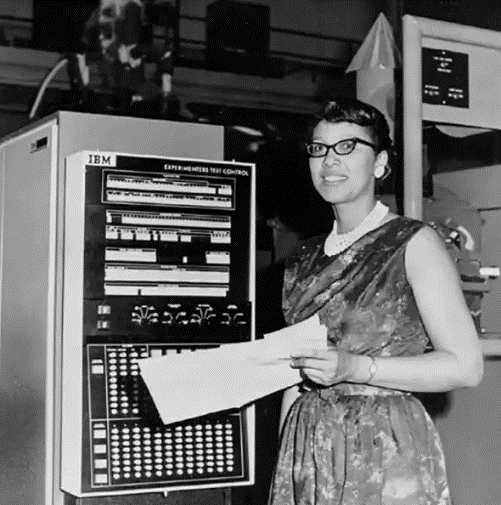 “When Computers Wore Skirts:” Katherine Johnson, NASA. Image courtesy of Wikimedia Commons “When Computers Wore Skirts:” Katherine Johnson, NASA. Image courtesy of Wikimedia Commons |
Katherine Johnson was an African-American space scientist and mathematician, is a leading figure in American space history and has made enormous contributions to America’s aeronautics and space programs by her incorporation of computing tools. She, along with her teammate Christine Darden, played a huge role in calculating key trajectories in the Space Race — calculating the trajectory for Alan Shepard, the first American in space, as well as for the 1969 Apollo 11 flight to the moon (NASA, 2020).
Often described as a human computer because of her precise mathematics calculations. She was actually employed as a computer and performed complex mathematical calculations that today would require super computers to compute.
Her tremendous mathematical capability and ability to work with space trajectories with such little technology and recognition at the time helped NASA put an astronaut into orbit around Earth. And then she helped put a man on the Moon.
Before her death, she was honored with several awards and honorary doctorate degrees too numerous to mention, including the Presidential Medal of Freedom, Congressional Gold Medal, and Induction into the National Women’s Hall of Fame.
Grace Hopper
Rear Admiral Grace Hopper, Inventor & Computer Scientist
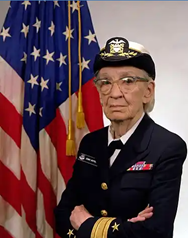 Grace Hopper – This image was released by the United States Navy with the ID DN-SC-84-05971, public domain Grace Hopper – This image was released by the United States Navy with the ID DN-SC-84-05971, public domain |
Grace Hoper was an American mathematician and rear admiral in the U.S. Navy who, best known as the “Queen of Code”, was a pioneer in developing computer technology, helping to devise UNIVAC I, the first commercial electronic computer, and naval applications for COBOL (common-business-oriented language) (Encyclopaedia Britannica, n.d.).
Although the term “bug” had been used by engineers since the 19th century to describe a mechanical malfunction, Hopper was the first to refer to a computer problem as a “bug” and to speak of “debugging” a computer.
Among her other efforts were top-secret calculations during World War II that contributed to the war efforts, leading to the end of the war and global peace. These included, computing rocket trajectories, creating range tables for new anti-aircraft guns, and calibrating minesweepers. In addition to their work for the Navy, Hopper and her colleagues also completed calculations for the army and “ran numbers” used by John von Neumann in developing the plutonium bomb dropped on Nagasaki, Japan (Grace Murray Hopper (1906-1992): A legacy of innovation and service, 2017).
Annie Easley
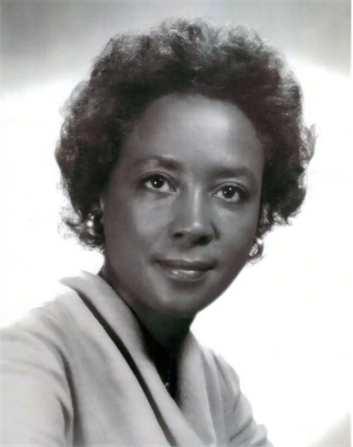 Annie Easley – NASA Annie Easley – NASA |
Computer Scientist
Annie Easley had never heard of the National Advisory Committee for Aeronautics (NACA) when she read an article about twin sisters who were “human computers” at the Aircraft Engine Research Laboratory in Cleveland, Ohio. The Lab (the predecessor of the NASA Glenn Research Center) was in need of people with strong math skills, and she was in need of a job after recently relocating from Birmingham, Alabama. Two weeks after reading the article, Easley began a career that would span 34 years. She would contribute to numerous programs as a computer scientist, inspire many through her enthusiastic participation in outreach programs, break down barriers for women and people of color in science, technology, engineering, and mathematic (STEM) fields, and win the admiration and respect of her coworkers.
In 1955, Easley began her career as a “human computer,” doing computations for researchers. This involved analyzing problems and doing calculations by hand.
When human computers were replaced by machines, Easley evolved along with the technology. She became an adept computer programmer, using languages like the Formula Translating System (FORTRAN) and the Simple Object Access Protocol (SOAP) to support a number of NASA’s programs. She developed and implemented code used in researching energy-conversion systems, analyzing alternative power technology—including the battery technology that was used for early hybrid vehicles, as well as for the Centaur upper-stage rocket (NASA, 2015).
Virginia Holsinger
Department of Agriculture Research Leader and Scientist
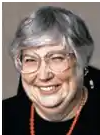 Virginia Holsinger – Department of Agriculture Virginia Holsinger – Department of Agriculture |
Virginia H. Holsinger was an American chemist known for her research on dairy products and food security issues. Holsinger developed a nutritious and shelf-stable whey and soy drink mixture that is distributed internationally by food donation programs as a substitute for milk. She also created a grain blend that can be mixed with water to provide food for victims of famine, drought, and war. Additionally, her work on the lactase enzyme formed the basis for commercial products to make milk digestible by lactose-intolerant people. Through these discoveries, Holsinger’s work has had a major impact on worldwide public health (Ainsworth, 2009).
In addition to being honored with many awards from agricultural and food chemistry groups, she received the Distinguished Service Award of the ACS Division of Agricultural & Food Chemistry in 1986 and the Lifetime Achievement Award for Women in Science & Engineering, presented by the National Science Foundation in 1995.
References
Ainsworth, S. J. (2009). Virginia H. Holsinger. Retrieved from American Chemical Society: https://cen.acs.org/articles/87/i41/Virginia-H-Holsinger.html
Edith Clarke. (n.d.). Retrieved from Wikipedia: https://en.wikipedia.org/wiki/Edith_Clarke
Encyclopaedia Britannica. (n.d.). Grace Hopper. Retrieved from Encyclopaedia Britannica: https://www.britannica.com/biography/Grace-Hopper
Grace Murray Hopper (1906-1992): A legacy of innovation and service. (2017). Retrieved from Yale University News: https://news.yale.edu/2017/02/10/grace-murray-hopper-1906-1992-legacy-innovation-and-service
NASA. (2015). Annie Easley, Computer Scientist. Retrieved from https://www.nasa.gov/feature/annie-easley-computer-scientist
NASA. (2020). Katherine Johnson: A Lifetime of STEM. Retrieved from NASA: https://www.nasa.gov/audience/foreducators/a-lifetime-of-stem.html
The White House Archives. (n.d.). The Untold History of Women in Science and Technology. Retrieved from The White House Archives: https://obamawhitehouse.archives.gov/women-in-stem


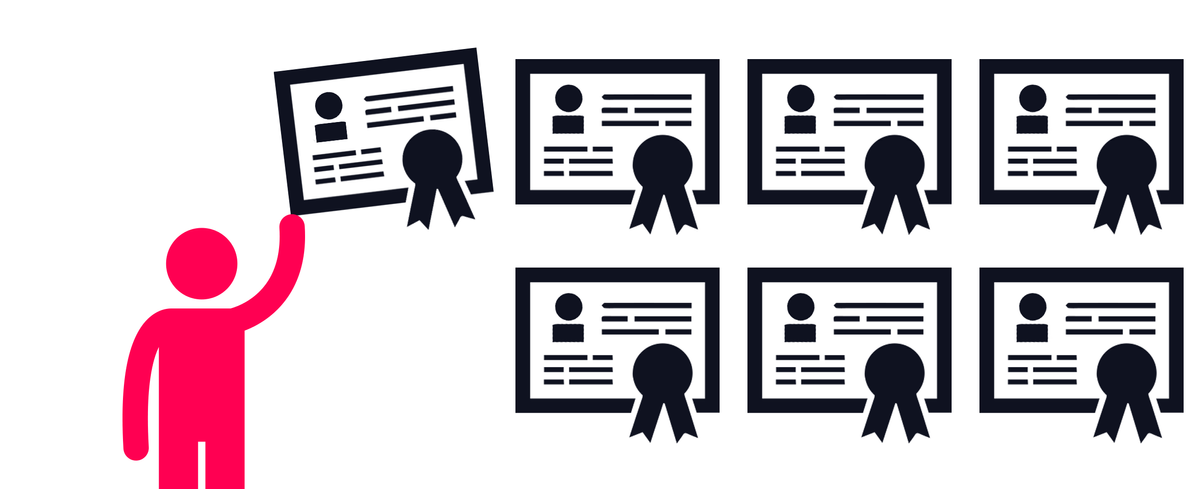
 AWS Certified Cloud Practitioner
Amazon Web Services Training and Certification.
AWS Certified Cloud Practitioner
Amazon Web Services Training and Certification.  CompTIA Security+ ce Certification.
CompTIA Security+ ce Certification.

 CompTIA A+ ce Certification.
CompTIA A+ ce Certification.


 IBM Agile Explorer
IBM Agile Explorer
 CompTIA Project+ Certification
CompTIA Project+ Certification
 CompTIA Cloud Essentials+ Certification
CompTIA Cloud Essentials+ Certification
 CompTIA DataSys+ ce Certification
CompTIA DataSys+ ce Certification